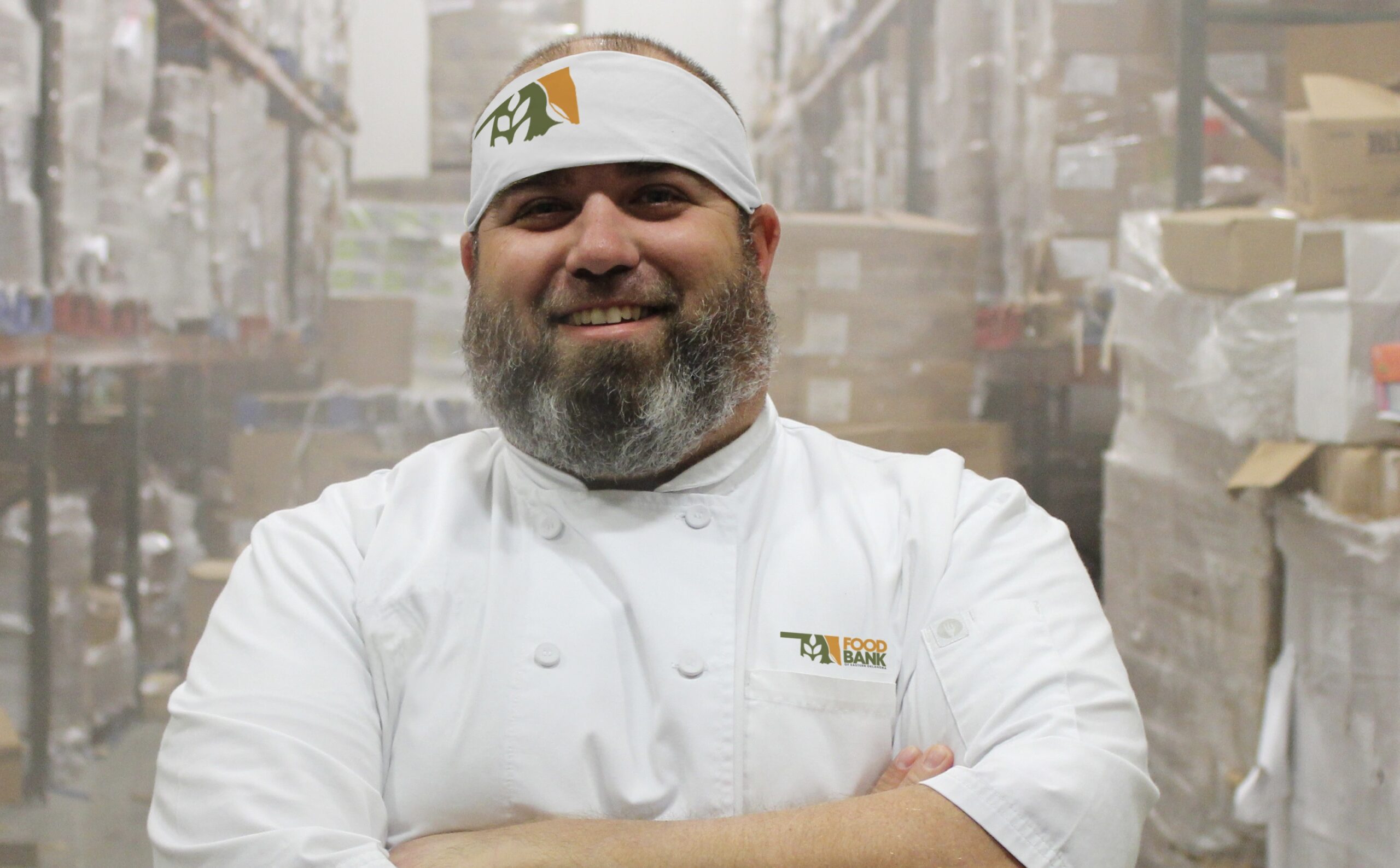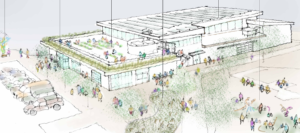As the former executive chef of a country club in Oklahoma, Jeff Marlow every once in a while would have to order a semi-truckload of ice for every day of a major golf tournament. Because there was no facility in the state large enough to handle such orders, the ice would have to be shipped in from Missouri or Arkansas.
Now as Chief Executive Officer of Food Bank of Eastern Oklahoma, Marlow is presiding over one of the largest freezers in the state, as well as four semi-trucks with drivers. With its ample freezer capacity and a workforce including 10,000 volunteers annually, the food bank now has the ability to become a major supplier of ice in the state.
The freezer is part of a new 48,000-square-foot addition to the food bank that also includes a state-of-the-art production kitchen, a volunteer center, offices and additional warehouse space. Marlow took on responsibility for the space when he became CEO of the food bank two months ago, after serving for four years on its board and transforming the organization’s culinary program during that time.

Ice is just one piece of Marlow’s plan to create a stream of earned revenue that would contribute to the food bank’s ongoing sustainability. A ten-point strategic plan calls for 25% of the food bank’s revenue to be earned. “We’re looking at revenue-generating businesses that we would operate through the food bank that would create sustainability for us from a funding standpoint and also serve our mission,” Marlow said.
Marlow figures it will cost about a quarter to make a bag of ice, which could then easily be sold for a profit of at least $2. An order of 30,000 bags of ice would equal revenue of $60,000 that the food bank didn’t have before. Plus, there’s the attraction to purchasers of keeping their money in the state, while also supporting the food bank.
There are other revenue-generating ideas in the works. The food bank’s freezer is attached to a new culinary center that will house another new business: cookie fundraising.
Following the example set by the Girl Scouts, the food bank wants to provide cookies to different organizations – schools, teams, marching bands – that would sell them to raise money for their causes, plus generate a revenue stream back to the food bank. The people buying the cookies would get the benefit of supporting the group cause, as well as their local food bank.
In the case of both the ice and the cookies, the cost and risk to the food bank is minimal, Marlow noted. “We have the facility, we have the knowledge, we have the equipment. Everything is here. We have the storage capacity. If it’s a flop and doesn’t work, we didn’t have to build a building or lose money,” he said.
The food bank has brought in a baker who taught baking at the college level and is nicknamed Tiny – “even though he’s not a tiny guy at all,” Marlow noted. Using a commercial mixer with a hydraulic lift for 40-gallon bowls, volunteers will be able to scoop the raw dough out onto sheet pans to be quick-frozen in a blast chiller. A package of 12 cookies will be sold as raw dough that people will make at home.
Marlow does not plan to stop with cookies and ice. He and his team have a host of other “really good” ideas that he declined to share for fear of for-profit companies taking and running with them. In his view, low-risk, revenue-generating businesses that support sustainability are “the new way” for food banks.
Marlow likened the current state of hunger in America to that of a catastrophic event on the order of the tornadoes and floods that tend to hit Oklahoma.” Hunger is attacking us right now,” he said, noting that Oklahoma ranks as the fifth-worst state in childhood food insecurity. “That’s not something that we should be proud of,” he said.
If the food bank can generate some of its own revenue, then it doesn’t need to rely as much on foundations and major donors to cover general operating expenses, Marlow said. “We can ask them to take that next big moonshot in support of the next big thing that’s really going to drop that needle.” – Chris Costanzo
Like what you’re reading?
Support Food Bank News
This article was made possible by the readers who support Food Bank News, a national, editorially independent, nonprofit media organization. Food Bank News is not funded by any government agencies, nor is it part of a larger association or corporation. Your support helps ensure our continued solutions-oriented coverage of best practices in hunger relief. Thank you!
Connect with Us:










